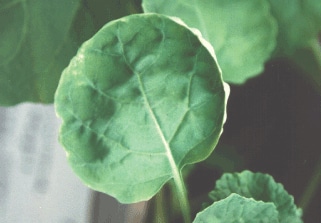
If you can’t get enough sulphur for seeding, divide what you have across all your canola acres, then top up with an in-crop application of ammonium sulphate.
Post-emergence sulphur can be applied up to flowering and still provide a yield benefit, but the most efficient yield conversion comes from sulphur applied at the time of seeding or soon after. When doing an in-crop application, growers could target only those areas — such as hill tops — that tend to be sulphur deficient.
Elemental sulphur applied at the time of seeding will not be available in time for when the crop needs it, especially if it is incorporated. Elemental sulphur prills need time to break apart to increase the surface area, and then require bacteria to oxidize the sulphur into plant available form. These bacteria are most active in warm moist soils. It can take months for elemental sulphur to become available to the crop. Also note that any sulphate made available from the oxidation of elemental sulphur applied last fall may have leached down into the soil profile if fields were wet last fall and this spring, potentially delaying availability to the crop this year
Listen to CCC agronomy specialist Dan Orchard speak on fertilizer.
